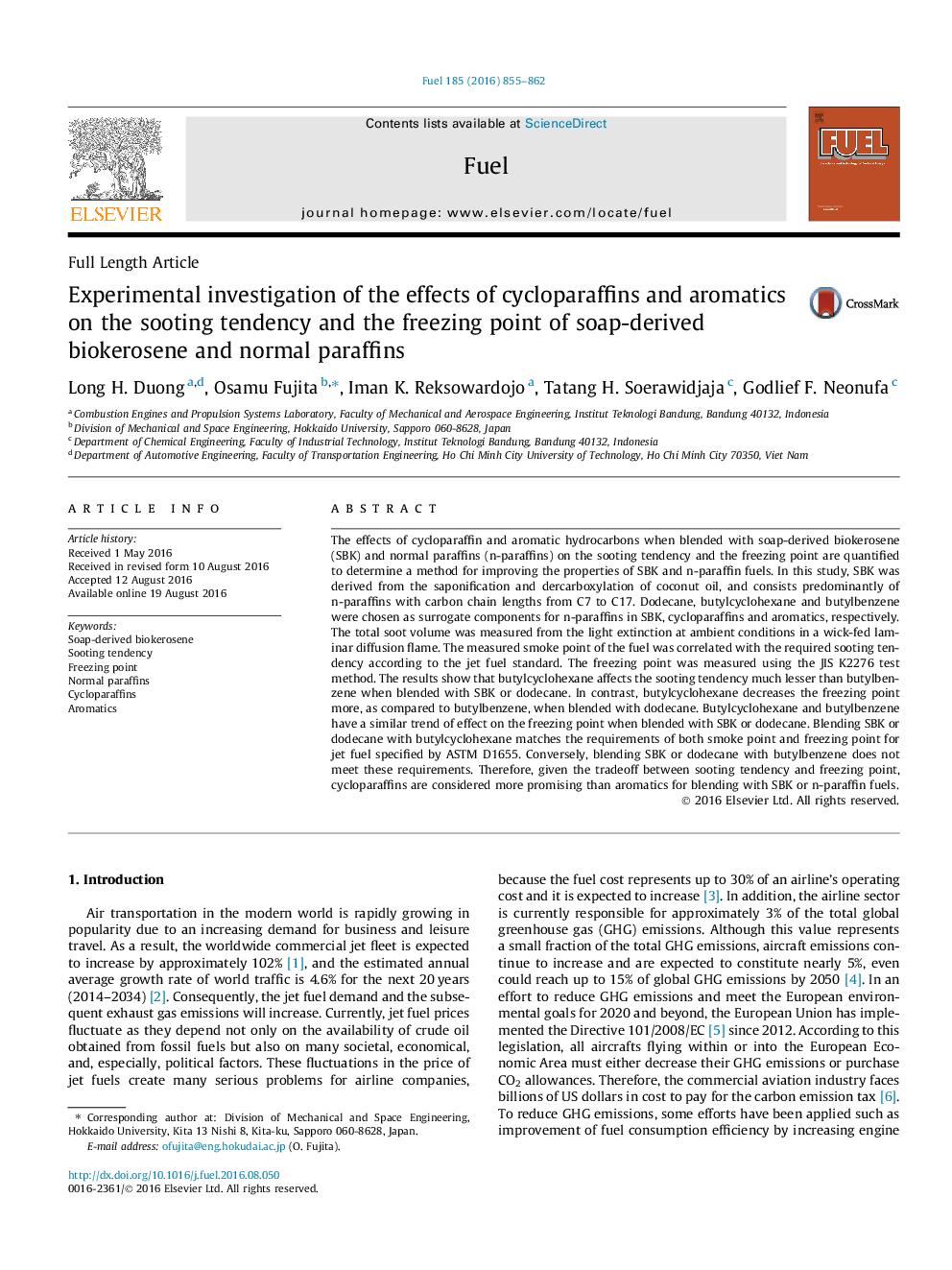| Article ID | Journal | Published Year | Pages | File Type |
|---|---|---|---|---|
| 6632900 | Fuel | 2016 | 8 Pages |
Abstract
The effects of cycloparaffin and aromatic hydrocarbons when blended with soap-derived biokerosene (SBK) and normal paraffins (n-paraffins) on the sooting tendency and the freezing point are quantified to determine a method for improving the properties of SBK and n-paraffin fuels. In this study, SBK was derived from the saponification and dercarboxylation of coconut oil, and consists predominantly of n-paraffins with carbon chain lengths from C7 to C17. Dodecane, butylcyclohexane and butylbenzene were chosen as surrogate components for n-paraffins in SBK, cycloparaffins and aromatics, respectively. The total soot volume was measured from the light extinction at ambient conditions in a wick-fed laminar diffusion flame. The measured smoke point of the fuel was correlated with the required sooting tendency according to the jet fuel standard. The freezing point was measured using the JIS K2276 test method. The results show that butylcyclohexane affects the sooting tendency much lesser than butylbenzene when blended with SBK or dodecane. In contrast, butylcyclohexane decreases the freezing point more, as compared to butylbenzene, when blended with dodecane. Butylcyclohexane and butylbenzene have a similar trend of effect on the freezing point when blended with SBK or dodecane. Blending SBK or dodecane with butylcyclohexane matches the requirements of both smoke point and freezing point for jet fuel specified by ASTM D1655. Conversely, blending SBK or dodecane with butylbenzene does not meet these requirements. Therefore, given the tradeoff between sooting tendency and freezing point, cycloparaffins are considered more promising than aromatics for blending with SBK or n-paraffin fuels.
Related Topics
Physical Sciences and Engineering
Chemical Engineering
Chemical Engineering (General)
Authors
Long H. Duong, Osamu Fujita, Iman K. Reksowardojo, Tatang H. Soerawidjaja, Godlief F. Neonufa,
